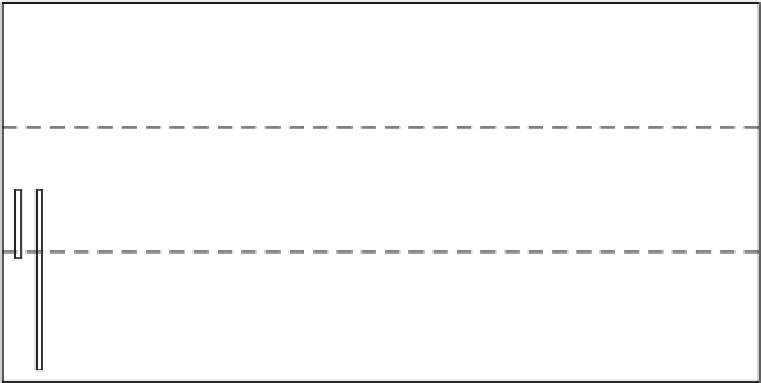Geoscience Reference
In-Depth Information
ID
A
B
C
Fig. 8 Schematic diagram showing the location A, B and C of convection in the active-break cycle. In El
Ni˜o years, convection shifts from A to B and then to C and back to A, in La Ni˜a years from A to C and
back to A
Figure
8
gives a schematic of the hypothesis on the lengthening of the AB cycle in El
Ni ˜o years taken from Joseph and Jayakumar (
2012
) showing the locations of convection
in the AB cycle. In a La Ni˜ a case, convection shifts from central India and adjoining
oceans (area A) to the equatorial Indian ocean (area C) and then back to A. Convection
does not move to the west Pacific (area B) as the SST there with a thick MLD has no intra-
seasonal variability, but only a seasonal slow warming and thus has not warmed enough for
the convection to shift there. Thus, the AB cycle has short period of about a month. In an El
Ni ˜o case, convection moves from area A to area B where SST has warmed fast in the
intra-seasonal scale as the region is cloud free and with a shallow MLD. After convection
and typhoons are active there for about a month, SST cools and the convection shifts to
area C. While the convection is active over areas B and C, rainfall over central India is
reduced and we get long break monsoon spells as defined by Rajeevan et al. (
2006
).
Ocean-atmosphere interaction mechanism thus explains the difference in the period of
the AB cycle of the monsoon between El Ni ˜o and La Ni˜ a years. Inter-annual variations
Fig. 9 Standardised anomaly of the Indian Summer Monsoon Rainfall (ISMR) for the years 1871-2010
(data taken from the Indian Institute of Tropical Meteorology (IITM) website
www.tropmet.res.in
). ISMR is
the average June to September rainfall of 306 rainguages well distributed over India. Drought years are
marked in red














































































































































































































































































































































































































